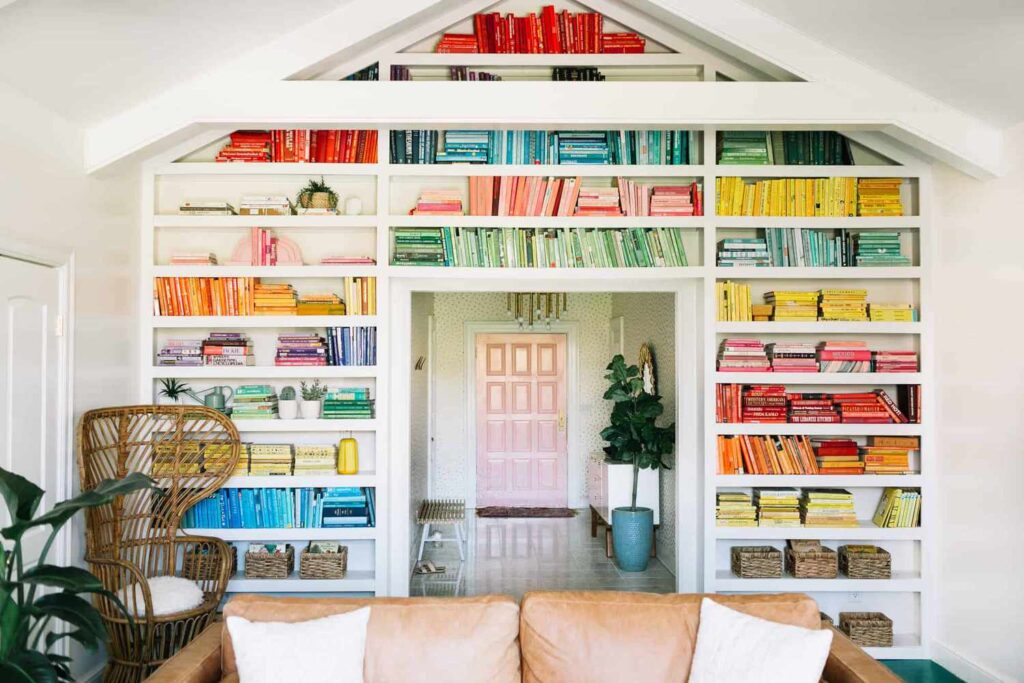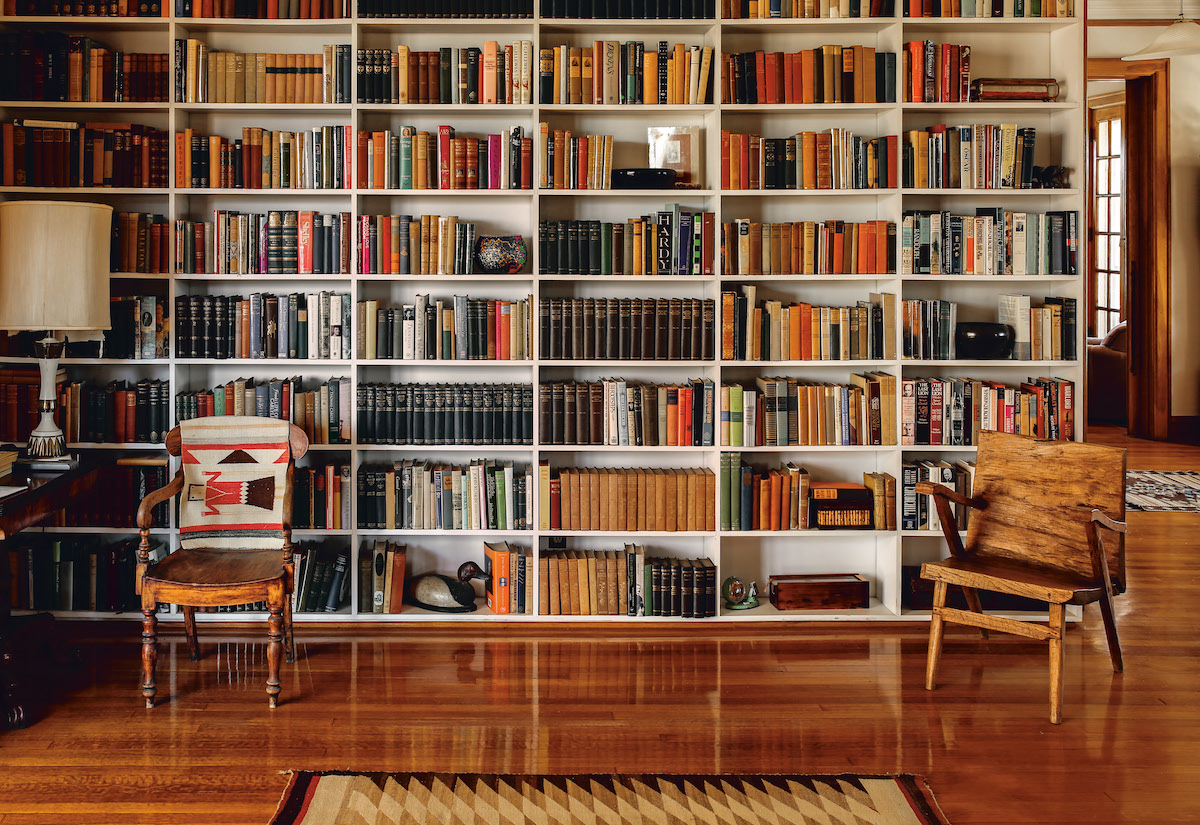Want to build yourself a personal library but don’t know where to begin? Let us take you through the 7 essential steps of building a personal library.
A personal library, you say? In 2023? Who has the time to read books, let alone build a personal library? It’s true that humans are collectively reading lesser books by the day in this digital age. Libraries are seeing dwindling visitors year-on-year and are shutting down for lack of reader subscriptions. People who continue to read prefer having infinite books on an online reader, like Kindle, rather than physical copies, which take up more storage, require regular maintenance and are not conducive to travel with.
But let me make a case for you, dear readers, as to why it is still important to nurture the notion of a personal library and build one. First, let’s get 2 things out of the way –
(a) your personal library is not defined by the size of the space, the number of books in it, or the variety of collections. Do not get scared by tall claims on the internet that a library needs to have a certain number of books. Your library is yours, so however many books you wish to possess will be THE perfect number for you. Everybody starts somewhere.
(b) a personal library is any safe and cozy space filled with books that can transport you to your magical world. It is accessible, it makes you feel safe, and it invites and engulfs you in exciting adventures. That’s what makes it “personal” – made for you, by you, of your choices.
Today, when everything is getting digitized, owning a personal library allows you to take a breather from the daily hustle. It seeks to provide you comfort, knowing there is a place you can safely get lost in. A tastefully designed corner, rich with the smell of books, can refresh your entire day, letting your mind dare explore, stop and stare, imagine, and, most importantly, dream.
So, why don’t we give building a personal library a try? Here are some steps you need to follow when curating your personal library.
Step 1: Find space
Finding the right space for a personal library is a painstaking exercise. Start by considering the size and location of it. Finding a silent room or cosy nook is an important consideration and could be difficult to find in a home setting. But do your best and embrace the charm of quirky bookshelf designs wherever space permits. Preferably choose someplace with ample lighting; decorate it to your comfort and personality. Remember, designing a personal library is as much about functionality as it is about adding character to your living space.
Step 2: Take stock

Book collecting can be thrilling and overwhelming at the same time. Before you even consider buying more books, take stock of all the books you have. To begin with, you don’t need a massive collection. Start with 15-20 odd books from genres that spark your interest and expand from there. A small number will allow you to operate in a setting where you can check out unread books, read multiple books simultaneously, and stack them genre-wise (do note that any considerations for bookshelves should only happen after you have this clarity).
Look for used bookstores, online platforms, or book sale campaigns (my last haul was 42 books for INR 4.7k) to discover new authors or generally unavailable copies of rare books. Beware of the urge to splurge! Budgeting is essential to avoid draining your savings on rare editions.
Step 3: Stack them your way
Depending on your collection strength, this step can go from as simple as double columns on a table rack to the painstakingly complicated process of arranging each book with respect to the genre or building a Zettelkasten. Most people choose something in the middle – alphabetically, genre-wise, or color-coding them. If you wish to go for a serendipitous discovery, stack the books in a random order. As long as you know which book is placed in which part of the library, you are good to go!
Step 4: Read, Read, Read

Don’t forget that building a personal library is not about collecting books alone; it’s also about reading them! Make time for regular book reading sessions, even if it means cutting down on screen time (especially so).
Books have a way of transporting us to different worlds, so grab your tea, coffee, or hot chocolate and let yourself go into a world of captivating stories. Make tiny notes as you finish books (or leave them midway) about whether you liked them, would like to reread them, etc. You should cultivate this habit to cull your book collection once every one or two years. Otherwise, books you will never touch again will take up all the space, and your bookshelves will end up being just another prized collection, but not a library.
Also Read: Rekindling the Magic: In Defence of Re-Reading Old Favorites
Step 5: Learn when to keep and when to let go
Your library will be a reflection of your literary journey, so keep the books you love close. For the ones you didn’t enjoy, divide them into two further categories. The first category must contain books that you would like to read and learn from in future, those which were unlucky to cross your reading path now but may find your favour later in life. Don’t be afraid to keep these books stored in your library. After all, they tell a story of growth and exploration. The other category must contain books you didn’t enjoy and are less likely to in future – trust me, you will know. Those books and you are just a poor match; they will be better off with someone else.
Step 6: Balance digital-physical
Would we like all our books to be physical? Absolutely, yes! But that’s not always practical. The first problem is space constraints – where to keep so many books, especially if you are a student, living in a rented apartment or sharing the space with someone else? But that’s not all. Maintaining a decent-size library has its challenges – termites, dusting, pages yellowing, and, of course, the difficulty of moving them around if need be.
In the era of the digital cloud, always be ready to strike an even balance between the digital books/audiobooks that you own against the physical copies that you wish to stack in your library. For special editions, it makes economic sense to go for cheaper online editions if you plan to read them and purchase collectible editions only when the right opportunities arise.
Step 7: Share responsibly
Public libraries and friends’ bookshelves are excellent resources for discovering new titles without breaking the bank. Investing in a public library subscription is an excellent way of giving back to society, and if you have friends whom you can exchange books with, there’s nothing better. It stimulates conversations, expands the horizon of knowledge, and strengthens the bond. Remember to always borrow books responsibly, return them promptly, and spread the love of reading among your fellow bibliophiles.
So, congratulations, dear beginner, if you are choosing to embark on the adventure of building your personal library! Remember, it’s not just about books; it is also about the joy of reading, the thrill of collecting, and the magic of imagination. Keep reading, keep exploring, and let your library be a testament to your love for the written word!

